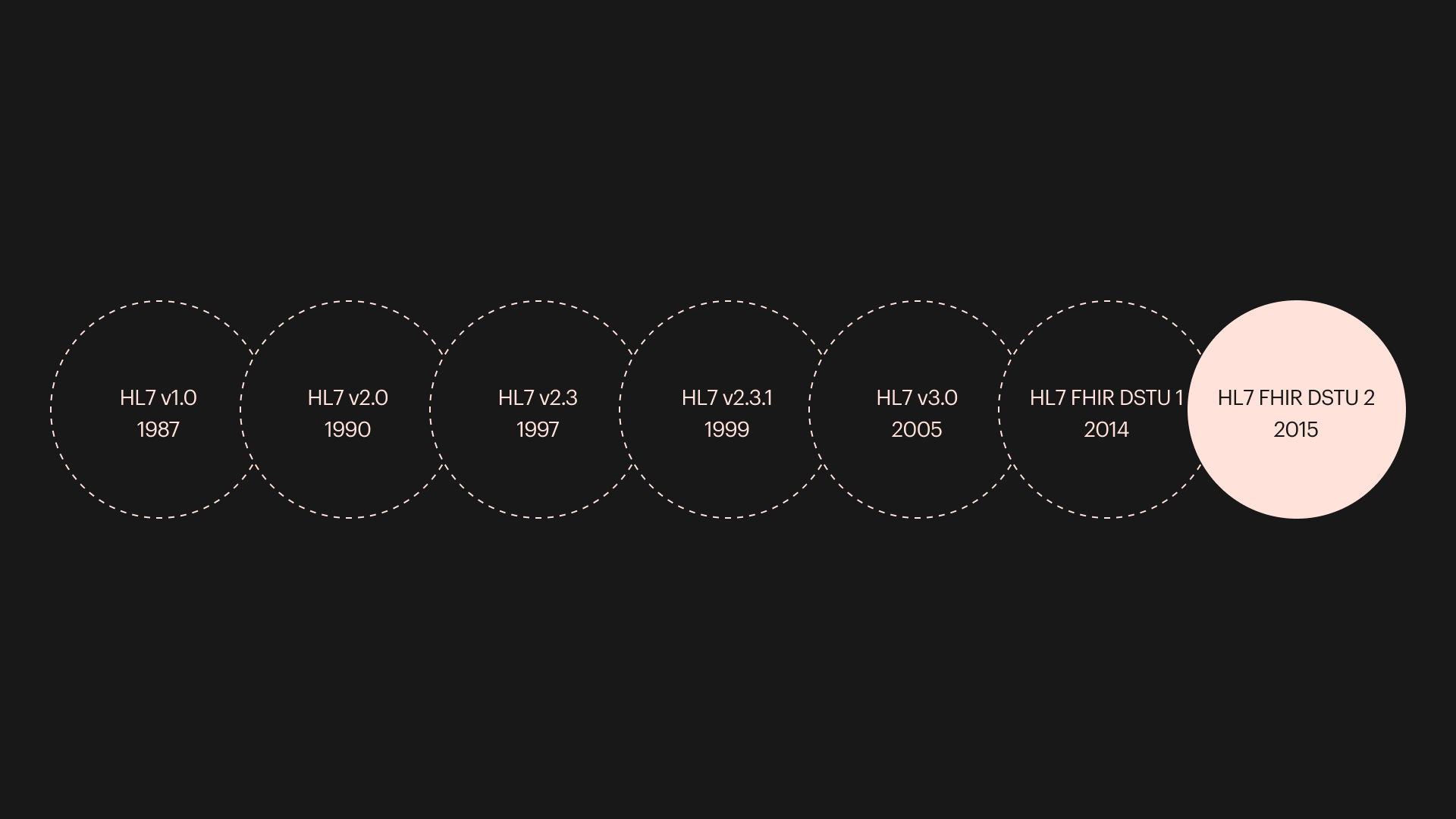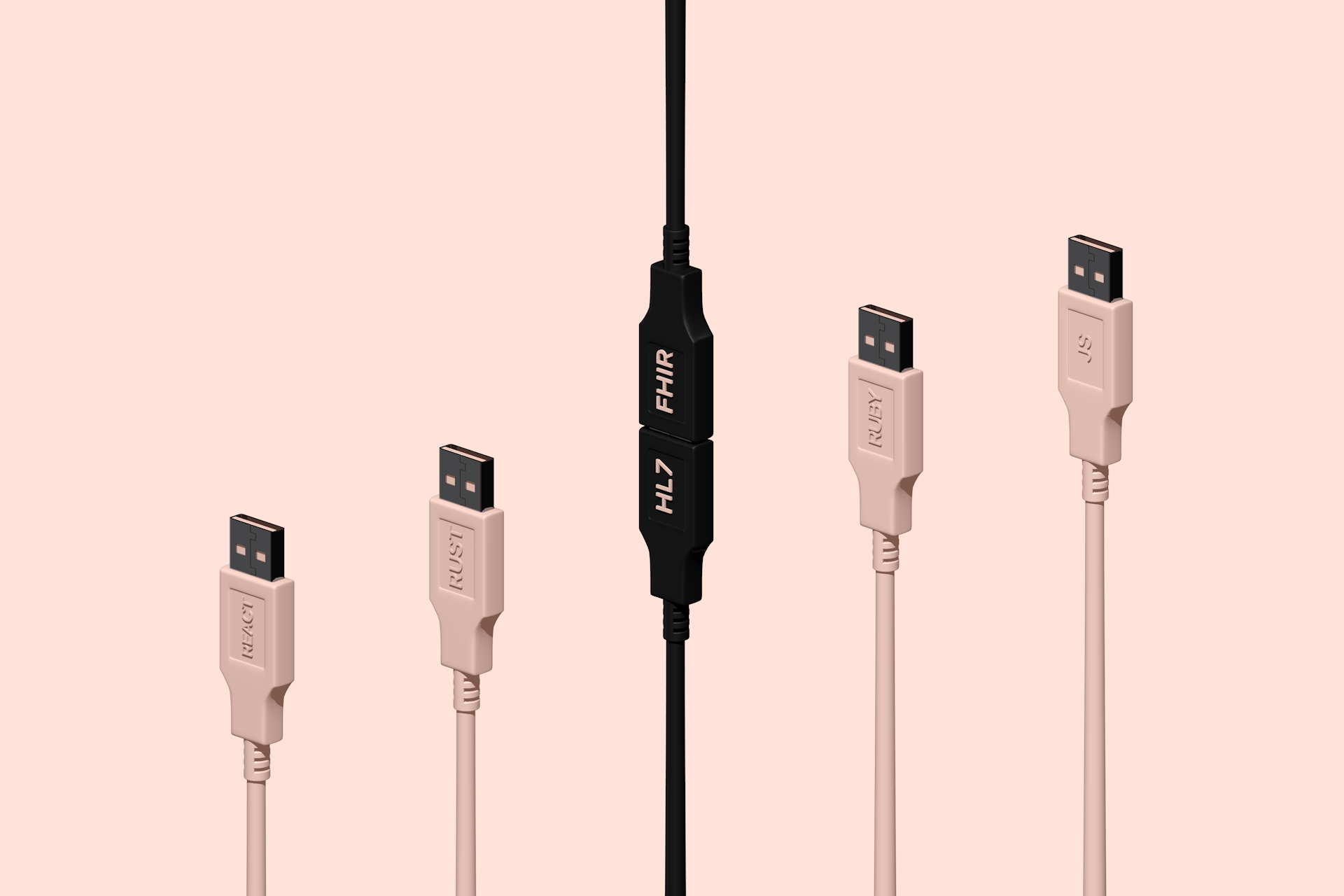Why HL7 FHIR standards are important in healthcare products development
We have build a healthcare information systen using HL7 FHIR standard of medical information processing
A long time ago our gadgets learned to monitor our health and give a signal about a problem if there is any. Synchronization of gadget signals and data on patients’ physical history is our immediate future that is intended to simplify the diagnostics and monitoring of changes in the condition of clinics’ care recipients.
Currently, many clinics are not only unable to get information from the patient’s gadgets but also have information systems of doubtful suitability for use in the near future.
No need to reinvent the wheel
An owner of a private clinic aiming to fuze the bases of two healthcare information systems (HIS) into one contacted Evrone. Two institutions using different systems for patient accounting and data processing were to be merged. Each clinic had developed its system on its own account over 7 years ago.
The leadership of the new fuzed medical center was content with both systems, and it was up to us to decide which one to eliminate. Our main goal was to save the most valuable data. For business it was the client base, for doctors, it was the history of the patients’ visits and treatment.
The two programs were very similar in terms of functionality, but under the hood, in the bases, there was nothing in common. We decided not to reinvent the wheel on the basis of two old ones but to put everything into a new base to which we adapted one of the two reception desks. We based it upon the existing and actively developing HL7 FHIR standard of medical information processing. In favor of it, we can count the fact that Apple Inc. creates its healthcare apps with FHIR and Microsoft also offers integration with its services through FHIR.

FHIR for clinical data
HL7 is a standard for exchange, management, and integration of electronic medical information. Its development was started in the USA as early as in 1987 by Health Level Seven nonprofit organization. The word “seven” in its name is a reference to the seventh level of the open system interconnection reference model. The standard has had three versions, and the FHIR standard (Fast Healthcare Interoperability Resources standard) is a brand new version developed from scratch with due account for the current level of information technologies. The essence of the standard is that it describes the formats of medical data and all the necessary things that can happen to the data.
The clinic leadership is fully aware that for now they just saved the client base and important medical information, compartmentalizing everything like in a medicine store. But even the simple HIS meeting the standard is enough to make headway. If you want to move to another system — you are welcome, the standard allows it. If you want mobile applications and data from gadgets — we will check the API and plug everything in. If you want interaction with a lab, HL7 FHIR has everything you need for that.


Gaining insight on HIS
Having delivered the work we contemplated the fact that our client was not the only case. How compatible are the healthcare information systems currently present at the market? Are they capable of giving away their data and receive data from others, is this data hard to access because of the too tight grip of the HIS?
We made a list of 52 companies that offer developments to Russian clinics and asked them whether their products employed HL7 standard. 10 companies confirmed the presence of the standard, and 14 ones acknowledged its absence.
Two companies remarked with regret that the standard had not been implemented and told us they were going to start moving in that direction next year. One company replied: “Most likely, it is not used”, the other one said: “Our system has not undergone HL7 FHIR certification”.
The rest of the companies did not answer our question. Moreover, quite a number of those latter companies had rather fresh-looking websites making the impression that the companies were working.
We can make an only superficial assessment of the number of clinics working with HIS that do not employ the information exchange standards. As judged by advertisements of software companies on their websites, there are hundreds of such institutions all over the country.

What is in store for HIS users
In all likelihood, currently private clinics do not create mass demand for information exchange between different systems, and the institutions use what they have; and, therefore, little attention is paid to data interchange standards in healthcare.
In many countries unified healthcare information systems are created, into which Healthcare Standards Integration standards are integrated. Interaction with the standards is likely to become mandatory for clinics. Developers are often recommended to stick to HL7. Development and launch of those systems will take place in the years to come. If then the doctor says “Sorry, I do not have access to your electronic card”, it is likely to become a total fiasco for private clinics.
Probably, large HIS developers will rewrite their products and provide their users with new versions thereof compatible with health data exchange applications. Clinics that developed their own HIS will have to look for development teams. When the need becomes urgent, the satisfaction will be pricy.
We believe that clinic owners should take the efforts made by the developers towards open source FHIR implementations into consideration and think about steps to make in the years to come. We at Evrone are ready to help to make steps in the right direction.